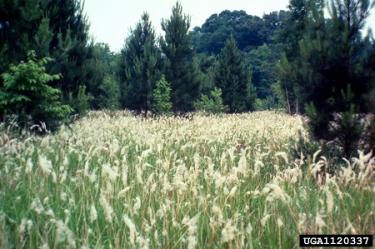When You Have Cogongrass
If cogongrass is already growing on your property—and in the Southeastern U.S., that’s a common problem—you can fight back.
It isn’t easy: both mowing and burning can cause the plant to produce new seeds and spread. But destroying the rhizomes can stop the spread of cogongrass and control existing infestations. There are a few different approaches to doing so:
Tillage. If the patch of cogongrass is relatively new, tillage can control it. You must till the soil to a depth of at least 6 inches, and you should till again every 6 to 8 weeks throughout the growing season. Make sure to clean your tillage equipment carefully to keep from spreading the seeds and rhizomes elsewhere, and plant the tilled area with a cover crop to discourage cogonograss from taking hold again.
Herbicides. For more established infestations or in tricky areas, such as steep slopes, established tree stands, or around dwellings, herbicides are often the best option. Only two kinds of herbicides—those with the active ingredients glyphosate (for example, Roundup, Glypro, Accord, etc.) and imazapyr (Arsenal, Arsenal AC, and Chopper)—have been shown to be effective against cogongrass. The key is to apply the herbicides twice a year: in early fall, and then again before flowering in spring to curb cogongrass seed production. An older infestation can require 2-3 years of treatment in this way.
Burning. Burning by itself can stimulate cogongrass growth, but if it’s used in combination with herbicide treatment and tillage, it can help you control an infestation more quickly and thoroughly. The new leaves and growth that emerge after a burn will absorb more herbicide. A combination of burning and tillage in the summer will set up the cogonograss for maximum herbicide absorption in the fall, and give you a better chance at controlling the infestation. But use extreme caution in your burning and seek help if you need it, because cogongrass fires burn fast and hot.
Once you’ve destroyed an existing infestation, it’s essential to plant and encourage native or desirable vegetation in the area. This will help to control soil erosion and prevent reinfestation. Even so, you’ll have to stay vigilant to keep new cogongrass growth at bay.
If you’re lucky enough to not have a current cogongrass infestation, you can help keep it that way with a few basic preventive measures.
How can I get more tips?
It’s simple! Enter your email below.

